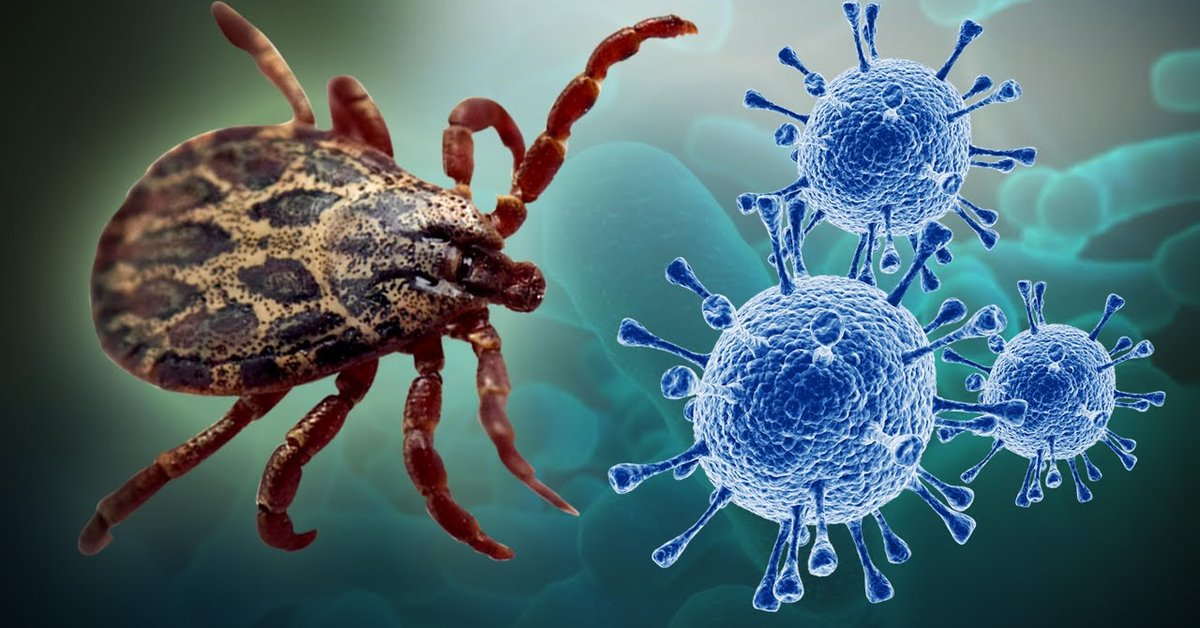Tick-Borne Virus: What It Is And How Humans Become Infected?
Harin - Aug 08, 2020

The way the researchers identified the tick-borne virus was through examining blood samples that they obtained from people having similar symptoms.
- UK Startup Develops The First Antimicrobial Smartphone In The World
- ICMR Warns That China’s Cat Que Virus Could Spread To India
- Amid COVID-19 Nightmare, Americans Now Have To Cope With Another Deadly Virus From Mosquitoes
As government authorities around the world are still struggling to contain the spread of the COVID-19 pandemic, China, where the pandemic originated from, is now having to deal with a new health threat. Severe Fever with Thrombocytopenia Syndrome, a new disease caused by a tick-borne virus, has reportedly infected at least 60 and killed seven. This has set off alarm bells, warning the country’s health officials to take action.
A large number of cases caused by the new tick-borne virus was from Anhui and Jiangsu province in East China, local media reported. In the early months of this year, over 37 people in Jiangsu were found to be infected with SFTS. Later, 23 more cases were discovered in Anhui.
The transmitting mechanism of the disease is through tick bites, but Chinese virologists have already warned that we cannot rule out a human-to-human transmission. But the difference between this virus and the SARS-CoV-2 virus causing COVID-19 is that it isn’t the first time people have been infected by the SFTS virus. The recent rise of cases just marks the disease’s re-emergence.
SFTS Virus: What Is It And Where Does It Come From?
SFTSV or severe fever with thrombocytopenia syndrome virus is from the Bunyavirus family. Humans become infected with the virus through tick bites. It was first discovered over a decade ago by a team of researchers from China. In 2008, the first few cases were spotted in rural areas of Henan and Hubei provinces.

The way the researchers identified the tick-borne virus was through examining blood samples that they obtained from people having similar symptoms. As per Nature’s report, 30% of those infected by the virus were killed. The current fatality rate is between 16 and 30%, according to the country’s Information System for Disease Control and Prevention.
Due to how fast the virus spread and the fatality rate of the disease, the WHO (World Health Organization) has listed SFTS in the top 10 priority diseases.
Virologists believe that the primary carrier or vector of this tick-borne virus is Haemaphysalis longicornis, an Asian tick. The disease is said to spread from March to November. Generally, the time between April and July is when the total number of infections peaks.

Pet owners, hunters, and farmers are those who are particularly vulnerable as they often come in contact with animals. And these animals may carry the tick. Scientists have discovered that humans often get the tick-borne virus from animals such as cattle, goats, sheep, and deer. Despite having the virus, generally, animals don’t show any symptoms of SFTSV.
What are the disease’s symptoms?
According to a study in 2011 from a team of Chinese researchers, the incubation period is from seven to 13 days. Patients usually experience different symptoms including fever, headache, chill, fatigue, anorexia, lymphadenopathy, myalgia, nausea, vomiting, diarrhea, gingival hemorrhage, abdominal pain, conjunctival congestion, and many more.

Some of the early signs include severe fever, low platelet count, and leukocytopenia (low white blood cell). In more serious cases, patients might suffer from multi-organ failure, central nervous system symptoms, and hemorrhagic manifestation.
Have SFTS cases been recorded outside of China?
Eventually, the virus traveled outside of China, to other East Asian countries which include South Korea and Japan. Since the virus was discovered, the number of cases has increased significantly.
In 2013, 36 cases were discovered in South Korea. However, by 2017, the figure rose to 270. Meanwhile, in 2010, China had 71 cases. In 2016, the country registered 2,600 cases. The number of cases in Japan rose by 50% between 2016 and 2017.

As the number of cases started climbing in these nations, public health officials have been educating local doctors as well as ordinary citizens about the risks caused by the tick borne virus. As more people began to understand more about the tick-borne virus and the disease, scientists discovered that the fatality, as well as the infection rate, began to drop.
How the disease is treated?
While researchers have yet to develop a vaccine to treat the tick-borne caused virus, it is known that the antiviral drug Ribavirin is effective in treating the disease.

In order not to be infected with the tick-borne virus and contracted the illness, government authorities including the Centers for Disease Control and Prevention of China have urged citizens to not wear shorts while taking a walk through the woods, tall grass, or any other environment where there are likely to have ticks.
>>> Amid COVID-19 Nightmare, Americans Now Have To Cope With Another Deadly Virus From Mosquitoes
Featured Stories

Features - Jul 01, 2025
What Are The Fastest Passenger Vehicles Ever Created?

Features - Jun 25, 2025
Japan Hydrogen Breakthrough: Scientists Crack the Clean Energy Code with...

ICT News - Jun 25, 2025
AI Intimidation Tactics: CEOs Turn Flawed Technology Into Employee Fear Machine

Review - Jun 25, 2025
Windows 11 Problems: Is Microsoft's "Best" OS Actually Getting Worse?

Features - Jun 22, 2025
Telegram Founder Pavel Durov Plans to Split $14 Billion Fortune Among 106 Children

ICT News - Jun 22, 2025
Neuralink Telepathy Chip Enables Quadriplegic Rob Greiner to Control Games with...

Features - Jun 21, 2025
This Over $100 Bottle Has Nothing But Fresh Air Inside

Features - Jun 18, 2025
Best Mobile VPN Apps for Gaming 2025: Complete Guide

Features - Jun 18, 2025
A Math Formula Tells Us How Long Everything Will Live

Features - Jun 16, 2025
Comments
Sort by Newest | Popular